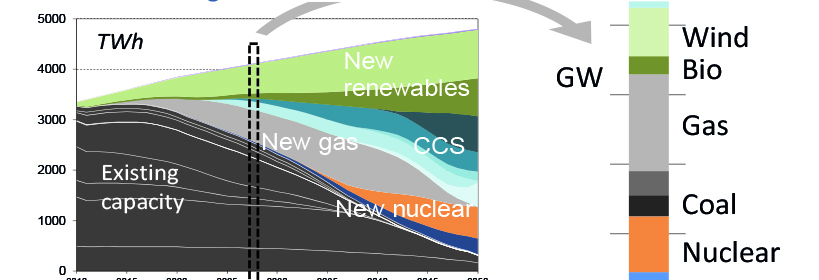



The objective of the model package, which has been developed and applied in the Pathways research programme, is to analyse the long-term development of, in particular, the European electricity-generation system, given different assumptions as to electricity demand, reductions in CO2 levels, fuel prices, policy measures and so forth. The time horizon stretches to Year 2050. Even though the models jointly cover a larger part of the energy system, the focus is on the electricity system. Thus, efforts to develop the modelling have been directed towards the electricity system, with the consequence that there is a significantly higher level of detailed information on this system, as compared to other parts of the energy system.
The model package is linked to several detailed databases, such as the Chalmers Power Plant and Fuel Databases (see the upcoming section). Thereby, the present system and capacity stock are directly linked to primarily the electricity-supply models ELIN and EPOD. The ELIN model is used for long-term analyses of the European electricity-supply system, while the EPOD model is a dispatch model that is applied to one year at a time, but with a higher time resolution within each year. The ELIN and EPOD models are described in greater detail further below. Other sectorial models applied in the research deal with energy use and associated CO2 emissions in industry and buildings (the building sector being analysed in the ECCABS model, as described below), and assess the long-term development of district heating in Europe (used as input to the ELIN model, as combined heat and power is included in the model framework). The sectorial models are supplemented by more general and overall energy systems models that cover a large part of the overall energy system, albeit with less sectorial-related detail. One example is the MARKAL-Nordic model for energy-system analyses of the Nordic energy system, in which the level of detail related to policy instruments is significantly higher than what is practical to include in the all-European model ELIN. As always, there is a delicate balance between the level of detail and the geographical and sectorial scopes.